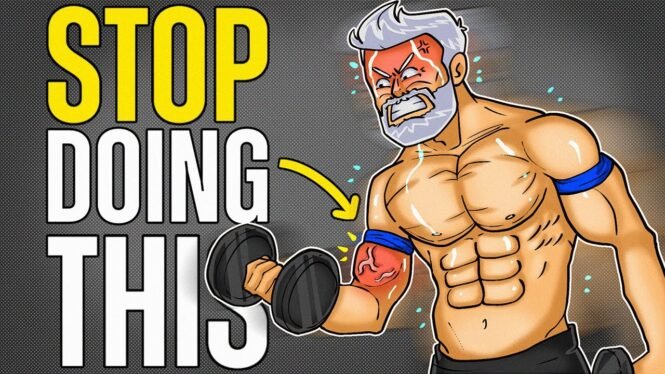Are you tired of training strategies that just don’t seem to work for building muscle? It can be frustrating to put in the time and effort at the gym without seeing the results you want. In this blog post, we’ll explore five training strategies that not only suck for muscle growth, but may actually be hindering your progress. Let’s dive in and discover what to avoid, so you can start seeing the gains you deserve!
Introduction:
Getting in shape and building muscle requires effective training strategies. However, with so much information available online, it can be challenging to determine which workout plan is the right one for you. Despite many training approaches claiming to be effective, only a few of them actually deliver results. In this article, we will cover the five training strategies that suck for muscle growth, and provide some alternatives that will help you achieve your fitness goals.
- High-Rep, Low-Weight Training
The idea behind high-repetition, low-weight training is that it improves muscle endurance and tones your muscles. However, this type of training doesn’t build muscle mass. For muscle growth, you need to overload your muscles with a significant amount of weight, and high-rep training won’t achieve that.
What should you do instead?
Focus on hitting heavier weights for fewer reps. This style of training is called hypertrophy training, and it’s designed to stimulate muscle growth. Incorporate compound lifts like squats, bench press, and deadlifts into your routine, and focus on progressive overload to continue building muscle mass.
- Cardio-Heavy Workouts
While cardio is an important aspect of overall fitness, too much cardio can hinder muscle growth. A cardio-heavy workout burns calories, but it also burns away the precious muscle you’ve worked so hard to build.
What should you do instead?
Incorporate cardio smartly into your routine. Focus on high-intensity interval training (HIIT) sessions and lower-intensity steady-state (LISS) cardio, rather than long, drawn-out cardio sessions. Aim for two to three cardio sessions per week, and make sure to fuel yourself with proper nutrition.
- Non-Progressive Training
One of the most common training mistakes is not progressively challenging yourself. If you perform the same workout every time, your muscles will adapt to it, and you’ll stop making progress.
What should you do instead?
Introduce variation into your workout routine by gradually increasing weights, varying exercises and changing rep ranges, and have structured periodization phases, such as strength, hypertrophy, and recovery phases.
- Neglecting Proper Nutrition
Muscle growth is 80% nutrition and 20% training. While training is crucial, it’s not enough on its own. Without proper nutrition, you will not see the muscle gains you’re looking for.
What should you do instead?
Focus on a healthy, balanced diet with adequate protein intake and nutrient-dense foods that support muscle growth. Consider using supplements to help you reach your daily protein and nutrient requirements, such as casein and whey protein powders and fish or krill oil for omega-3s and fatty acids.
- Training with Insufficient Rest Time
While it’s important to push yourself during a workout, it’s equally important to give your muscles proper rest to recover. Training without adequate rest time does not promote muscle growth or recovery.
What should you do instead?
Allow your muscles at least 48 hours of rest after a workout. Focus on getting enough sleep and eating the right foods to support muscle recovery.
FAQs
- Can I skip cardio altogether while focusing on building muscle?
While cardio is not essential for building muscle, minimizing its frequency will be beneficial for muscle mass and recovery. Higher intensity, shorter duration, and LISS cardio are the best options to maintain cardiovascular fitness.
- How can I track my progress in the gym?
Tracking your progress is easy. You can use a notebook, spreadsheets, or online tracking tools to record your progress in exercises, reps and sets, rest time, and weights used.
- Should I stretch before or after a workout?
Dynamic stretches should be done before the workout to loosen up and warm up your muscles, while static stretching should be done after the workout to cool down and increase flexibility.
- Can I build muscle without lifting weights?
Strength training with weights is the most effective way to build muscle mass. However, bodyweight exercises, resistance bands, TRX training, and weighted vest exercises can also help.
- Can I still build muscle if I have a fast metabolism?
Yes, you can still build muscle if you have a fast metabolism. You’ll need to increase your caloric intake to compensate for your higher metabolism and ensure that you’re consuming enough protein to support muscle growth.
Conclusion:
In conclusion, building muscle requires effective training strategies that prioritize progressive overload, variation, proper nutrition, adequate rest, and smart cardio training. Avoid the five training strategies mentioned in this article, and instead shift your focus to a comprehensive training program that supports your muscle-building goals. Remember that muscle growth is a slow process, so be patient, stay consistent, and track your progress to see the results over time.

